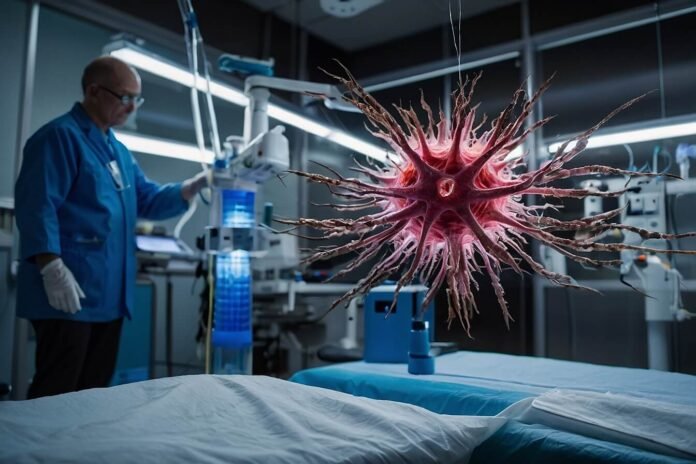Cancer therapy has undergone significant advancements in recent years, with researchers continuously striving to develop more effective and targeted treatments. Staying updated on the latest breakthroughs is crucial for patients, caregivers, and healthcare professionals alike. In this article, we will explore some of the cutting-edge treatments revolutionizing cancer therapy.
1 .Introduction
Cancer therapy encompasses a range of treatments aimed at combating cancerous cells and preventing their proliferation. These treatments can include surgery, chemotherapy, radiation therapy, and more recently, targeted therapies and immunotherapy. With ongoing research and technological advancements, new approaches to cancer treatment are constantly emerging, offering hope to patients worldwide.
2 .Immunotherapy
One of the most promising developments in cancer therapy is immunotherapy, which harnesses the body’s immune system to target and destroy cancer cells. Unlike traditional treatments that directly target cancer cells, immunotherapy works by stimulating the immune system to recognize and attack tumors. This approach has shown remarkable success in treating various types of cancer, including melanoma, lung cancer, and leukemia.
3 .Precision Medicine
Precision medicine, also known as personalized medicine, takes into account individual variability in genes, environment, and lifestyle when designing treatment plans. Genetic testing plays a crucial role in identifying specific mutations or biomarkers that drive cancer growth, allowing for targeted therapies tailored to each patient’s unique genetic makeup. Precision medicine has revolutionized cancer treatment by improving outcomes and minimizing side effects.
4 .Nanotechnology
Nanotechnology involves the manipulation of materials at the nanoscale to create novel therapeutic agents with enhanced properties. In cancer therapy, nanoparticles are used to deliver drugs directly to tumor sites, minimizing damage to healthy tissues. This targeted approach improves drug efficacy while reducing systemic toxicity. Nanotechnology holds immense potential for improving cancer treatment outcomes and overcoming drug resistance.
5 .Gene Editing
Advancements in gene editing technology, particularly CRISPR-Cas9, have opened up new possibilities for cancer therapy. CRISPR allows researchers to precisely modify DNA sequences, enabling targeted disruption of cancer-causing genes or the introduction of therapeutic genes. While still in the early stages of development, gene editing holds promise for treating genetic disorders and preventing cancer progression.
6 .Immunogenomics
Immunogenomics integrates immunology and genomics to better understand the immune response to cancer. By analyzing the genetic makeup of both tumors and the immune system, researchers can identify biomarkers predictive of treatment response and develop personalized immunotherapies. Immunogenomics has the potential to revolutionize cancer treatment by improving patient outcomes and minimizing adverse reactions.
7 .Photodynamic Therapy
Photodynamic therapy (PDT) is a non-invasive treatment approach that utilizes light-activated drugs, known as photosensitizers, to target and destroy cancer cells. When exposed to light of a specific wavelength, the photosensitizer produces reactive oxygen species that induce cell death. PDT offers precise control over treatment parameters and has shown promise in treating superficial cancers such as skin cancer and certain types of lung and esophageal cancer.
8 .Conclusion
In conclusion, the field of cancer therapy is witnessing unprecedented progress thanks to cutting-edge treatments that leverage the latest advancements in science and technology. From immunotherapy and precision medicine to nanotechnology and gene editing, these innovative approaches are revolutionizing how we diagnose and treat cancer. As research continues to push the boundaries of possibility, the future of cancer therapy looks increasingly promising.
FAQs
- What is the most promising cutting-edge treatment for cancer?
The most promising cutting-edge treatment for cancer varies depending on the type and stage of the disease. However, immunotherapy and precision medicine have shown significant potential in improving patient outcomes. - How do these advancements affect traditional cancer treatments?
While traditional cancer treatments such as surgery, chemotherapy, and radiation therapy remain important, cutting-edge treatments offer new avenues for targeted and personalized therapies, potentially enhancing efficacy and reducing side effects. - Are these treatments accessible to all patients?
Access to cutting-edge cancer treatments may vary depending on factors such as geographical location, healthcare system, and insurance coverage. Efforts are underway to improve accessibility and affordability for all patients. - What role does research play in developing new cancer therapies?
Research plays a crucial role in driving innovation and advancing our understanding of cancer biology. Ongoing studies help identify new therapeutic targets, optimize treatment strategies, and improve patient outcomes. - How can patients stay informed about the latest breakthroughs?
Patients can stay informed about the latest breakthroughs in cancer therapy by consulting with their healthcare providers, participating in clinical trials, and accessing reputable sources of information such as cancer research organizations and medical journals.

